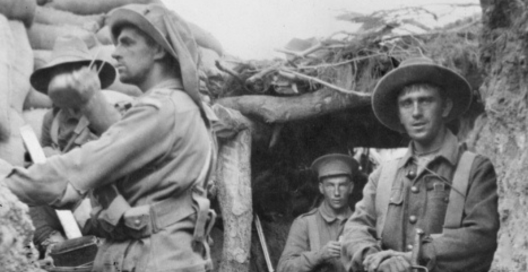Today marks the 109th anniversary of the battle of Lone Pine at Gallipoli in Türkiye, one of the most intense engagements fought by Australians during the First World War.
The assault at Lone Pine was originally intended as a diversion to keep the Turkish reserves away from the main Allied attack to the north. That was an attempt to break out of the main Anzac perimeter and capture the strategic heights of Chunuk Bair and Hill 971.
Australian official war correspondent Charles Bean, who was on Gallipoli, described how, in the moments before the assault, excited Diggers ‘chaffed each other dryly’ like spectators waiting to see a football match:
Some belated messenger hurried along the trench to find his platoon, and, in passing, recognised a friend. ‘Au revoir’, Bill’, he nodded, ‘meet you over there’. ‘So long, Tom’, was the answer; ‘see you again in half an hour’.
At 17:30 on 6 August 1915, the whistles blew.
The Anzacs went over the top towards the Turkish trenches a few dozen metres away.
From that night and over the next several days, fierce fighting took place across a complex maze of trenches, many roofed over with heavy logs, at first forcing the Australians to break through these to engage with the defenders.
When the battle was over, more than 2,000 Anzacs has been killed or wounded, and almost 7,000 Turks had suffered the same fate.
The Lone Pine battlefield – now the site of the largest Australian memorial at Gallipoli – is named for the solitary pine tree that stood near the Turkish trenches.
While the tree itself didn’t survive the assault, seeds from one of its pinecones were sent back to Australia and used to grow the Lone Pine within the grounds of the Australian War Memorial.
To find out more about the battle of Lone Pine, visit the Anzac Portal.
Lest we forget.

The Turkish Lone Pine trenches, captured on the afternoon of the 6 August 1915 by 1st Brigade under Brigadier General Walker.
Image courtesy of the Australian War Memorial.